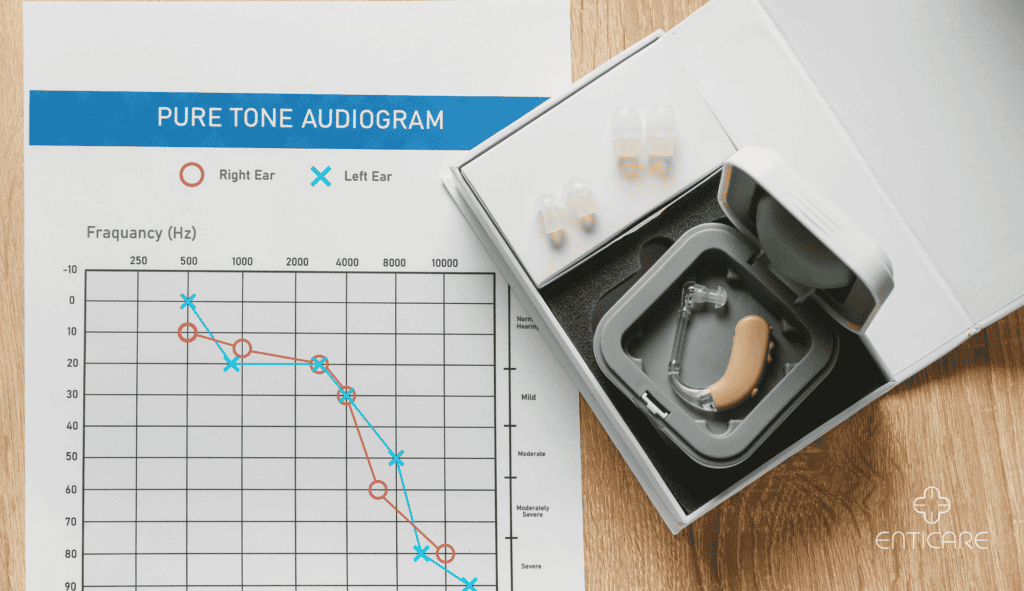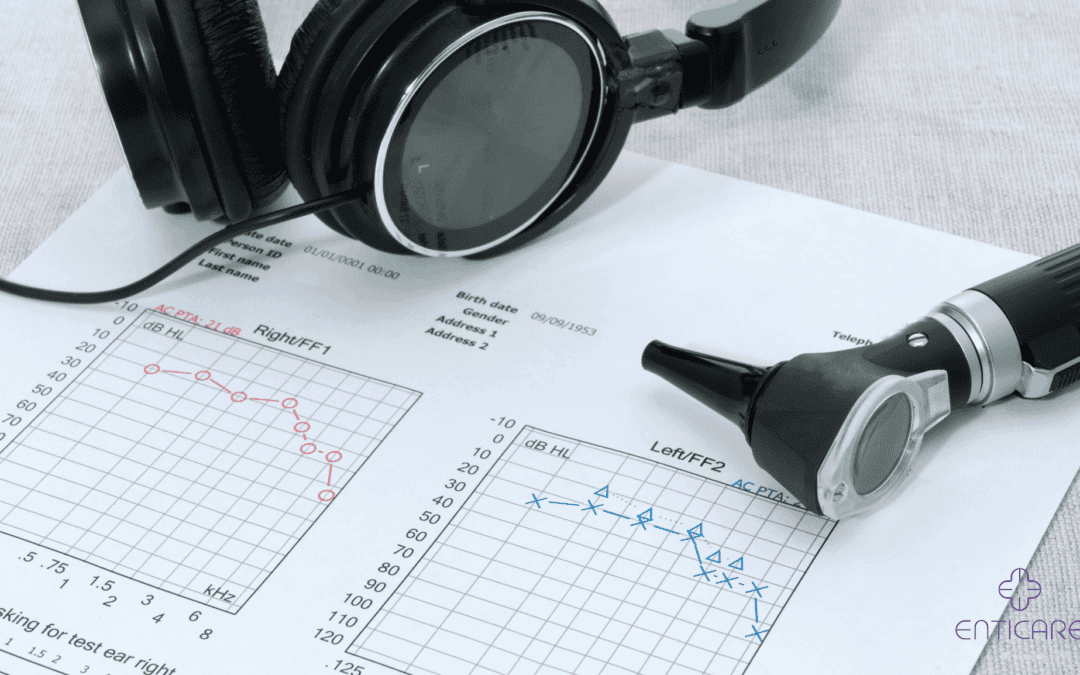If you recently visited an audiologist and received your audiology report, you may have found yourself puzzled by the detailed medical terms and numbers. While an audiology report holds crucial information about your hearing health, interpreting can feel overwhelming. However, understanding your audiology report is key to effectively managing and improving your hearing condition.
This comprehensive guide will help you understand your audiology report by breaking down the key elements and explaining how they relate to your hearing. Whether you’re managing hearing loss, tinnitus, or any other auditory condition, this guide offers the clarity you need to take control of your hearing health.

Introduction to Audiology Reports
Audiology reports are crucial for healthcare professionals to assess and diagnose hearing-related issues. These reports provide a comprehensive overview of a patient’s hearing abilities, including the degree and type of hearing loss, and offer recommendations for treatment and management based on a thorough hearing evaluation. This section will delve into audiology reports, exploring their significance, components, and how to interpret them.
When you receive an audiology report, it’s a detailed map of your hearing health. This document is packed with valuable information that helps your audiologist understand the specifics of your hearing loss, whether sensorineural, conductive, or mixed. By breaking down the results of various hearing tests, the report guides the audiologist in crafting a personalized treatment plan, which may include hearing aids, therapy, or other interventions.
What is an Audiology Report?
An audiology report provides a detailed hearing assessment of your auditory system, documenting the results of various hearing tests conducted during your visit to an audiologist. This report is essential for diagnosing hearing problems and determining the best course of treatment.
Key Components of an Audiology Report
- Pure-Tone Audiometry: Measures your hearing threshold across a range of pitches and volumes. Pure-tone Audiometry can also reveal high-frequency hearing loss, which is often associated with age-related hearing loss and can affect the ability to hear higher-pitched sounds.
- Speech Audiometry: Assesses your ability to hear and understand speech in different environments.
- Tympanometry: Evaluates the condition of your middle ear and eardrum.

Interpreting the Audiogram: A Visual Representation of Your Hearing
The audiogram is at the heart of your audiology report—a graphical representation of your hearing levels. Learning to interpret this graph will help you understand the nature of your hearing loss and sensitivity.
The audiogram can also help identify noise-induced hearing loss, characterized by a distinctive pattern often seen in individuals exposed to loud sounds over time.
How to Read an Audiogram
- Frequency (Pitch) vs. Intensity (Loudness): The audiogram plots frequencies (from low to high pitch) on the horizontal axis and loudness (in decibels) on the vertical axis. This graph shows which pitches you hear well and which frequencies pose difficulties.
- Hearing Thresholds: Your hearing threshold refers to the softest sound you can hear at each pitch. The lower the marks on the graph, the greater the hearing loss, indicating reduced hearing acuity.
- Symbols and Lines: Audiograms use symbols like “X” for your left ear and “O” for your right ear. The position of these symbols indicates your hearing threshold at various frequencies. Unilateral sensorineural hearing loss, which affects only one ear, can be identified by asymmetrical patterns on the audiogram and may indicate underlying medical conditions.
Speech Audiometry: Measuring Speech Understanding
Your hearing ability to hear sounds is only one part of the picture—your ability to understand speech is just as important. Speech audiometry helps evaluate this crucial aspect of hearing.
Components of Speech Audiometry
- Speech Reception Threshold (SRT): Measures the softest level at which you can recognize speech. It aligns with the pure-tone average for mid-range frequencies.
- Word Recognition Score (WRS): This score evaluates how well you can understand and repeat words at a comfortable listening level. A lower score indicates difficulty understanding speech, even if you can hear it, which can affect your hearing clarity.
- The most comfortable listening level (MCL) is the volume level at which you find listening to speech the most comfortable.
Speech audiometry results help your audiologist determine how well hearing aids or other devices may help you in real-world listening situations, like having a conversation in a noisy environment.
Tympanometry: Assessing Middle Ear and Middle Ear Health
Tympanometry provides valuable information about the condition of your middle ear, which plays a key role in transmitting sound from the outer ear to the inner ear. Tympanometry results often accompany pure-tone and speech audiometry results to offer a comprehensive view of your hearing function and ear health.
What Tympanometry Reveals
- Ear Pressure: Tympanometry measures how well your eardrum moves in response to changes in air pressure. Negative or positive pressure readings can indicate Eustachian tube dysfunction or middle ear infections.
- Eardrum Mobility: A sluggish eardrum may indicate fluid in the middle ear, which can cause conductive hearing loss.
- Middle Ear Function: Tympanometry also helps detect problems with the middle ear bones (ossicles) or perforations in the eardrum, which can lead to hearing loss and affect your overall hearing health.
Tympanometry results often accompany pure-tone and speech audiometry results to offer a comprehensive view of your hearing and ear health.

Clinical Significance of Audiology Reports
Audiology reports play a vital role in clinical decision-making, as they provide healthcare professionals with essential information about a patient’s hearing abilities through a thorough hearing evaluation. These reports can:
- Identify the type and degree of hearing loss: By pinpointing whether the hearing loss is sensorineural, conductive, or mixed, audiologists can determine the most appropriate treatment.
- Audiology reports inform treatment plans. They guide the fitting of hearing aids, cochlear implants, or other medical interventions tailored to the patient’s needs.
- Monitor changes in hearing over time: Regular audiology reports help track the progression of hearing loss, allowing for timely adjustments in treatment.
- Facilitate communication between healthcare professionals and patients: Clear and detailed reports ensure that the audiologist and the patient are on the same page regarding the hearing condition and treatment plan.
- Support research and education in audiology. Comprehensive audiology reports contribute to a broader understanding of hearing loss and the development of new treatment methods.
Understanding the clinical significance of audiology reports can help healthcare professionals provide more effective care and improve patient outcomes. These reports are not just diagnostic tools but essential for crafting a holistic approach to hearing health.
Terminology and Abbreviations
Audiology reports often employ specialized terminology and abbreviations crucial for a comprehensive hearing assessment. Familiarizing yourself with these terms can help you understand and interpret audiology reports better. Some standard terms and abbreviations include:
- AC (Air Conduction) refers to the sound pathway from the outer and middle ear to the inner ear.
- BC (Bone Conduction): Refers to the transmission of sound through the bones of the skull to the inner ear, bypassing the outer and middle ear.
- dB (Decibel): A unit of measurement for sound intensity or loudness.
- HL (Hearing Level): The degree of hearing loss measured in decibels.
- MCL (Most Comfortable Loudness Level): The volume level at which a person listens to speech most comfortably.
- PTA (Pure-Tone Average) is the average of hearing thresholds at specific frequencies used to determine the degree of hearing loss.
- SRT (Speech Reception Threshold): The softest level at which a person can recognize speech.
- SNHL (Sensorineural Hearing Loss): A hearing loss caused by inner ear or auditory nerve damage.
- WNL (Within Normal Limits): Indicates hearing levels are within the normal range.
Understanding these terms and abbreviations will help you navigate your audiology report with greater ease and confidence, allowing you to grasp the nuances of your hearing health.
Next Steps After Receiving Your Audiology Report
- Discuss Results with Your Audiologist: Your audiologist will guide you through the results and discuss treatment options, such as hearing aids, cochlear implants, or medical procedures.
- Explore Hearing Aids or Devices: If your hearing assessment indicates hearing loss, your audiologist may recommend specific devices to enhance your hearing. Modern hearing aids include noise reduction and Bluetooth connectivity for a better listening experience.
- Schedule Regular Hearing Checkups: Even if your audiology report indicates mild or no hearing loss, regular checkups can help monitor your hearing health and catch any changes early.
Schedule Your Hearing Consultation Today
Understanding your audiology report empowers you to take control of your hearing health and make informed treatment decisions. Whether you need hearing aids, therapy, or a simple monitoring plan, early intervention will significantly benefit your long-term hearing ability.
Don’t wait until your hearing loss affects your daily life. Schedule a consultation today to review your audiology report and explore the best treatment options for your unique needs. You can book your appointment by visiting Enticare Hearing Services. Let our expert audiologists guide you toward better hearing and improved quality of life.

